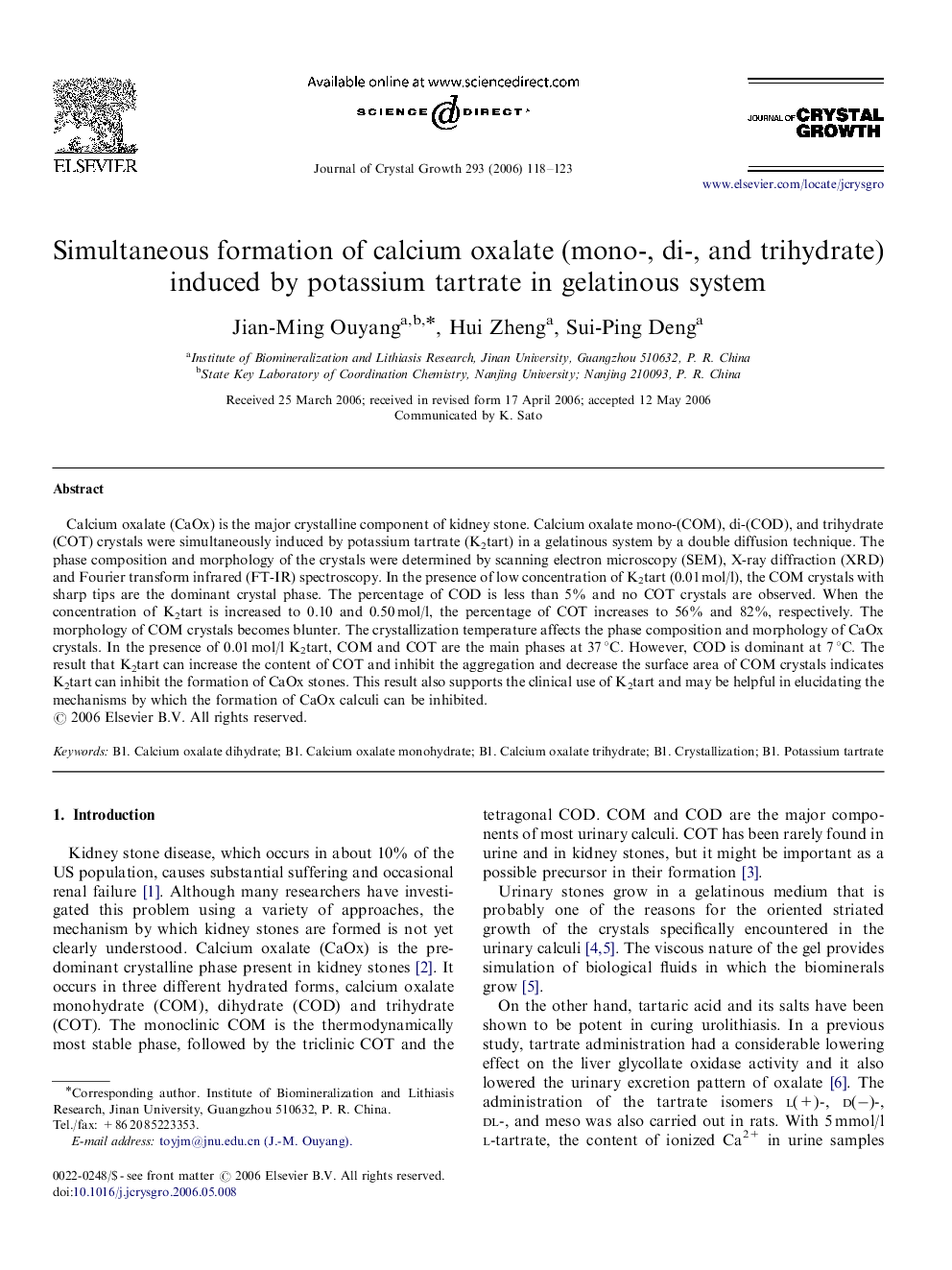| Article ID | Journal | Published Year | Pages | File Type |
|---|---|---|---|---|
| 1796679 | Journal of Crystal Growth | 2006 | 6 Pages |
Calcium oxalate (CaOx) is the major crystalline component of kidney stone. Calcium oxalate mono-(COM), di-(COD), and trihydrate (COT) crystals were simultaneously induced by potassium tartrate (K2tart) in a gelatinous system by a double diffusion technique. The phase composition and morphology of the crystals were determined by scanning electron microscopy (SEM), X-ray diffraction (XRD) and Fourier transform infrared (FT-IR) spectroscopy. In the presence of low concentration of K2tart (0.01 mol/l), the COM crystals with sharp tips are the dominant crystal phase. The percentage of COD is less than 5% and no COT crystals are observed. When the concentration of K2tart is increased to 0.10 and 0.50 mol/l, the percentage of COT increases to 56% and 82%, respectively. The morphology of COM crystals becomes blunter. The crystallization temperature affects the phase composition and morphology of CaOx crystals. In the presence of 0.01 mol/l K2tart, COM and COT are the main phases at 37 °C. However, COD is dominant at 7 °C. The result that K2tart can increase the content of COT and inhibit the aggregation and decrease the surface area of COM crystals indicates K2tart can inhibit the formation of CaOx stones. This result also supports the clinical use of K2tart and may be helpful in elucidating the mechanisms by which the formation of CaOx calculi can be inhibited.
